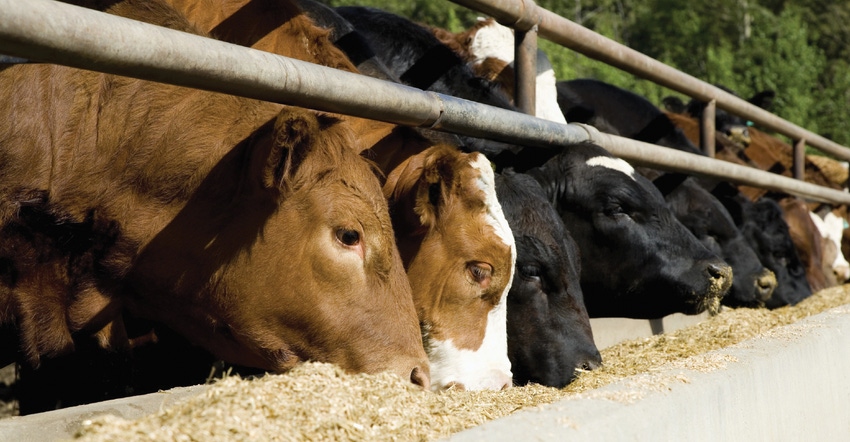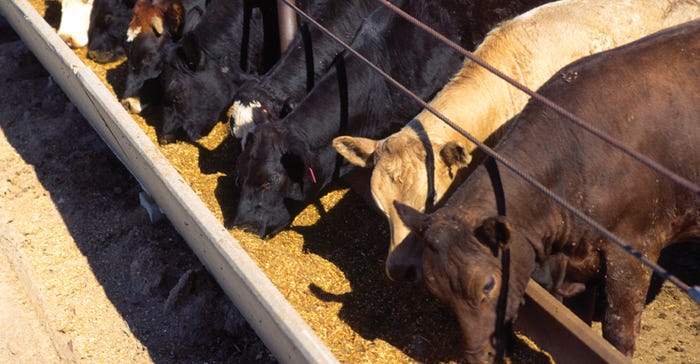Cattle implant strategies for improved profitability
Myths and misconceptions about implant strategies abound among beef producers. Implants may be perceived as old-school technology — however, they continue to offer producers opportunity for profit.
June 1, 2018

Sponsored Content
Re-implanting: Capitalizing on the right implant at the right time
Re-implanting steers is not a foreign concept; but the advantages to using a re-implant program often are not discussed. Re-implanting cattle allows the producer to target specific implant programs at the right time in animals optimizing production, whereas extended release implants focus on convenience, not necessarily optimization. Elanco technical consultant Lee-Anne Walter, Ph.D., Elanco technical consultant and an expert in cattle growth physiology, wants to put those common misconceptions to rest.
“There is scientific evidence that shows using a traditional re-implant strategy yields results at closeout,” said Walter.
Walter analyzed data from multiple sources1-3* to identify the benefits of using a traditional re-implant strategy. The results of her analysis show that using multiple implants has benefits that go beyond just higher carcass weights.
Feed efficiency is the real payoff
Producers may notice a lag in feed efficiency toward the end of the feeding period. As cattle grow and days on feed increases, cattle deposit a greater accumulation of fat as a portion of their gain. Since the caloric content of fat is higher than muscle, and intakes aren’t increasing, the same amount of calories results in less weight gained, with the shift to greater and greater fat deposition. Utilizing implants allows producers to shift the growth curve of their animals, resulting in more muscle growth.
Furthermore, using more aggressive implants shifts the growth curve even further. Using a two-implant program with the terminal implant, such as a 200 mg implant like Component® TE-200 with Tylan® implant, led to a 3.8% improvement in feed efficiency vs. competitors who recommend a single long-duration implant.* According to Walter, this is due to the shift in the growth curve from a more powerful terminal implant administered when the animal is in an inefficient period of growth, thereby increasing lean tissue and reducing fat when fed to similar days on feed
Flexibility counts
“Veterinarians who care about optimal results should consider recommending multiple implants to producers,” said Walter. She also suggests it’s smart to work backwards when planning implantation schedules by using the terminal window as the starting point. When utilizing population Benchmark® data* and reducing confounding factors by focusing on 50-pound in-weight and out-weight groups as well as a tight days on feed (DOF) distribution, Walter evaluated the impact of decreasing terminal window on feed efficiency.
“The data show that by reducing the terminal window (terminal implant being a 200 mg TBA implant) by 10 days and lengthening the initial implant by 10 days in a re-implant program, there were improvements in feed efficiency,” said Walter. The reduction in terminal window allows us to target our most potent release of product at a time when the animal is in its most inefficient period of growth. “That is precisely the time that a single implant — placed months before — is losing its effectiveness.”
“By not using implants, or using one implant that loses potency over time, producers are missing out on the final boost that the terminal implant can provide,” said Walter. “Managing terminal windows is critical to improving feed efficiency.”

Protecting return on investment
Using implants strategically throughout an animal’s life can help ensure that it will gain the most weight, and with multiple implants, balance and strength will be just right for that stage of growth. Single implants do not have that flexibility. But does the return on investment (ROI) of using multiple implants pay off? Walter says — yes.
“It’s clear from years of data that a well-planned implant program is worth the time and money to implement,” said Walter. “As a veterinarian, you are a crucial link in providing advice on how implants can fit your clients’ strategies. Help them to evaluate their program from start to finish.”
Walter adds that not all implants are created equally. Every Component with Tylan implant includes a tylosin tartrate (Tylan) pellet — a localized antibacterial that helps protect the implant site. The added value of Tylan’s abscess defense helps producers ensure ROI.
The bottom line, according to Walter, is to “optimize growth and efficiency and don’t neglect the tried-and-true multiple implant strategy in favor of newer technologies. There is abundant evidence that traditional re-implantation strategy might be your best course of action.”
Reach out to an Elanco technical consultant to learn more about recommending implants for your clients.
The label contains complete use information, including cautions and warnings. Always read, understand and follow label and use directions.
Implants are indicated for increased rate of weight gain; see product labels for full indication. Administer one dose in the ear subcutaneously according to label directions.
*An analysis of Elanco’s Benchmark database from 2013 to 2016.
1Rev-XS Tech Bulletin, 2010. “184-Day Revalor®- XS vs. Revalor®– IS re-implanted with Revalor®-200.”
2Rev-XS Tech Bulletin, 2011. “204-Day Revalor®- XS vs. Revalor®– IS re-implanted with Revalor®-200 or Revalor®- S.”
3McLaughlin et al. 2013. “Comparison of a reimplant program using Synovex® Choice and Synovex® Plus versus Revalor®-XS in feedlot steers.” PAS 29:219-227.
Benchmark, Component, Tylan, Elanco, and the diagonal bar logo are trademarks of Eli Lilly and Company or its affiliates.
Other company and product names are trademarks of their respective owners.
© 2017 Eli Lilly and Company or its affiliates.
fyhlth 7001-1 |USBBUCPT00063
About the Author(s)
You May Also Like


.png?width=300&auto=webp&quality=80&disable=upscale)
